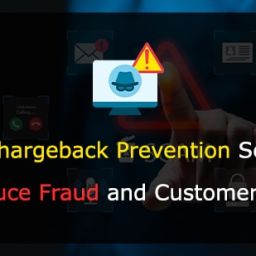
As a merchant, Chargeback Defense is an important part of your business. Chargebacks are costly for merchants, both financially and in terms of time and effort. That’s why it’s essential to put together a robust Chargeback Defense Plan to minimize the risk of fraudulent chargebacks and other risks associated with card payments. In this blog post, we’ll show you how to strengthen your Chargeback Defense Plan to keep your business safe and profitable.
Understand chargebacks
Chargebacks are an unfortunate reality of running a business, and understanding how they work is the first step in learning how to protect yourself from them. Chargebacks happen when a customer disputes a charge that appears on their credit card statement. This can be due to a variety of reasons, including but not limited to fraud, mistaken identity, unauthorized use, non-receipt of goods or services, or unsatisfactory product or services.
When a chargeback occurs, the customer’s issuing bank (usually their credit card company) will investigate the dispute and either reverse the charge or uphold it. If the charge is reversed, the merchant (you!) will have to reimburse the customer for the amount charged, plus any applicable fees.
To minimize the likelihood of chargebacks occurring in the first place, merchants must be familiar with the laws and regulations that govern transactions. It is important to understand the chargeback process and stay up to date on changes in card networks and industry best practices. Merchants should also consider implementing risk mitigation strategies, such as thorough authentication and verification processes, to reduce the chances of chargebacks.
Some Related Blogs
- Don’t Get Ripped Off! How to Avoid Amazon Refund Scam
- The Ultimate Guide to Chargeback Management for Merchants
- 5 Ways to Improve Customer Service | Chargeback Expertz
- The Do’s and Don’ts of Creating an eCommerce Return Policy
Follow the rules
As a merchant, it’s essential to be aware of the rules related to chargeback defense. Understanding the rules and regulations for credit card processing can help you stay compliant with the payment brands and protect yourself from costly chargebacks.
First, it’s important to familiarize yourself with the card brand’s chargeback rules. Each payment brand has its own set of policies and procedures for handling chargebacks. Some of these rules may include the timeline to dispute a chargeback, what information is needed in order to dispute a chargeback, and the necessary documentation required to prove the validity of the transaction. Knowing these rules can help you respond quickly and accurately when a chargeback occurs.
It’s also important to understand and comply with industry best practices when it comes to chargeback defense. These best practices include clear communication with customers, detailed invoices that reflect the actual purchase, and strict data security measures to protect customer data. Following these guidelines can help you avoid chargebacks and maintain a good reputation with your customers.
Finally, make sure you are aware of any applicable regulations or laws that apply to your business and industry. Not all countries have the same laws and regulations for handling chargebacks, so it’s important to be aware of what applies in your region. Understanding the local laws and regulations can help you ensure compliance and protect your business from costly fines and penalties.
By understanding the rules, best practices, and regulations related to chargeback defense, you can minimize the risk of costly chargebacks and protect your business.
Communicate with your customers
One of the most important steps in chargeback defense is to stay in contact with your customers. Your customers should be made aware of their purchase details and how to contact you if there are any issues. Keeping an open line of communication can help avoid misunderstandings that may result in a chargeback.
Start by sending your customers an order confirmation email, which should include all details about the purchase, such as product description, total cost, delivery date, return policy, and other information. This helps the customer to easily access the necessary information, avoiding confusion and potential chargebacks.
Follow-up emails are also a great way to stay connected with your customers and can provide helpful reminders about their order or upcoming payment due dates. Additionally, emails can be used to ask customers for feedback on their purchase or experience. This not only shows that you value their opinion but also provides you with valuable insight into how you can improve the customer experience and reduce future chargebacks.
When resolving disputes or chargeback claims, be sure to be polite and professional. Make sure to clearly explain the situation and provide evidence that the transaction was valid. You should also provide your customers with clear instructions on how to dispute the chargeback if they disagree with it.
By maintaining clear and consistent communication with your customers, you can strengthen your chargeback defense plan and help avoid any unnecessary disputes.
![]()
Email us anytime!
Email customer service 24/7
![]()
Call us anytime!
Reach customer care 24/7 at +1 (888) 901-8653
Use data
When it comes to chargeback defense, the best way to stay ahead of potential disputes is by utilizing data. Data can help you identify patterns in customer behavior and help you proactively address any potential issues before they lead to a chargeback.
You can use data to identify customers who are likely to file a dispute, analyze customer spending habits and trends, and even track the status of your chargebacks. This data will allow you to take preventative steps such as updating billing terms or offering discounts to customers who may be at risk for filing disputes.
In addition to utilizing data to identify potential problem areas, you should also be sure to store all the necessary information regarding the sale in your system. This includes details such as order numbers, product descriptions, billing information, and shipment information. Having this data readily available can make it easier to respond quickly and effectively when a chargeback comes in.
Finally, it is important to monitor your data closely. Keep track of the number of chargebacks you receive over time, and look for trends that can help you better understand why customers are filing disputes. If you are able to identify and address the underlying issue, you may be able to avoid a chargeback in the future.
Educate yourself and your team
The best way to keep up with the ever-changing rules and regulations related to chargebacks is to stay informed. This means not only educating yourself but also your staff. Regularly review new industry standards, such as Visa and Mastercard’s dispute resolution procedures and best practices, to ensure you are up-to-date on your policies and procedures. It’s also important to train your team on how to respond to customer disputes in a timely manner and ensure that everyone is aware of their role in the process.
In addition to staying informed about industry changes, be sure to educate yourself and your staff about how to recognize fraud and chargeback abuse. Understanding the types of fraud and ways customers might try to take advantage of merchants can help you prevent losses and strengthen your chargeback defense plan. Lastly, be sure to equip your staff with the necessary resources to resolve disputes as quickly as possible. Investing in technology that automates and streamlines your chargeback process will help you save time and money in the long run.




